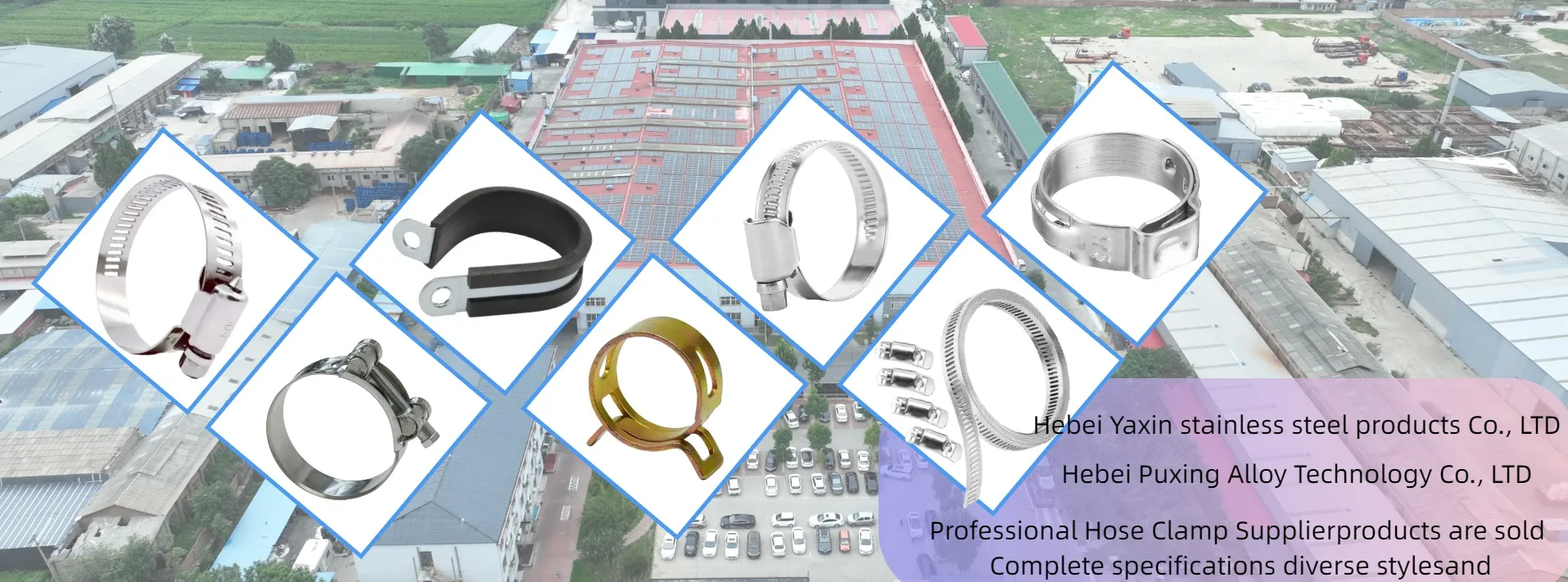- Phone:+86-17331948172 +86-0319-8862898
- E-mail: inquiry@puxingclamp.com
ಆಗಸ್ಟ್ . 21, 2025 19:20 Back to list
Durable Adjustable Hose Clamps for Pipes & Radiators
Understanding the Critical Role of Hose Clamps in Industrial Applications
In the vast landscape of industrial components, the seemingly humble hose clamp plays an indispensable role. These small yet powerful devices are the linchpin of fluid transfer systems across virtually every sector, ensuring secure, leak-proof connections for hoses and pipes. Their importance cannot be overstated, as a failure in a single hose connection can lead to catastrophic system breakdowns, environmental hazards, and significant financial losses. This comprehensive guide delves into the world of industrial hose clamps, with a particular focus on the robust and versatile Large Stainless Steel Adjustable American Type Hose Clamp. We will explore industry trends, technical specifications, diverse application scenarios, and the meticulous manufacturing processes that define their quality and reliability.
The demand for high-performance hose clamps continues to grow, driven by increasingly stringent safety standards, the need for enhanced operational efficiency, and the expansion of complex fluid handling systems globally. Industries are seeking solutions that offer superior corrosion resistance, higher clamping forces, and longer service lives, especially in harsh operating environments. This has led to advancements in materials, design methodologies, and manufacturing techniques, ensuring that modern adjustable pipe tube clamps meet the rigorous demands of contemporary industrial infrastructure.
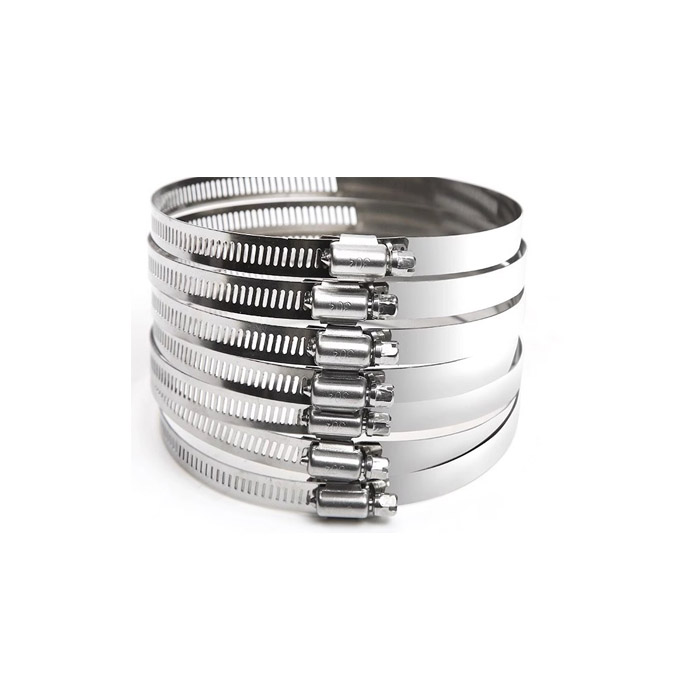
The global market for industrial fastening solutions, including large adjustable hose clamps, is projected to expand significantly, fueled by growth in sectors such as automotive, petrochemical, marine, and agriculture. Manufacturers are continually innovating to provide solutions that are not only effective but also cost-efficient and environmentally sustainable. This article aims to equip B2B decision-makers and technical personnel with the insights needed to make informed choices when selecting these critical components, emphasizing the value of quality, precision, and supplier expertise.
Detailed Manufacturing Process of a High-Quality Hose Clamp
The production of a reliable hose clamp, particularly an american type radiator hose clamp, is a sophisticated multi-stage process that combines precision engineering with advanced material science. Each step is critical in ensuring the final product's integrity, clamping strength, and longevity. Here, we outline the typical manufacturing workflow for a premium stainless steel hose clamp.
1. Material Selection and Preparation
The foundation of any superior hose clamp lies in its material. For the Large Stainless Steel Adjustable American Type Hose Clamp, materials like AISI 304 or AISI 316 stainless steel are typically chosen. These grades offer exceptional corrosion resistance, crucial for applications in harsh environments such as marine, chemical processing, or outdoor installations. AISI 304 provides good general corrosion resistance, while AISI 316, with its molybdenum content, offers superior resistance to pitting and crevice corrosion, particularly in chloride-rich environments. Raw materials arrive as coils of stainless steel strip and wire.
2. Stamping and Forming of Band and Housing
The band, which wraps around the hose, is produced through a precision stamping process from the stainless steel strip. Advanced progressive dies are used to cut and form the band with specified dimensions, including the perforation patterns that allow the worm gear to engage. Concurrently, the housing, which encloses the worm gear mechanism, is also precisely stamped and formed. The edges of both components are deburred to prevent damage to the hose.
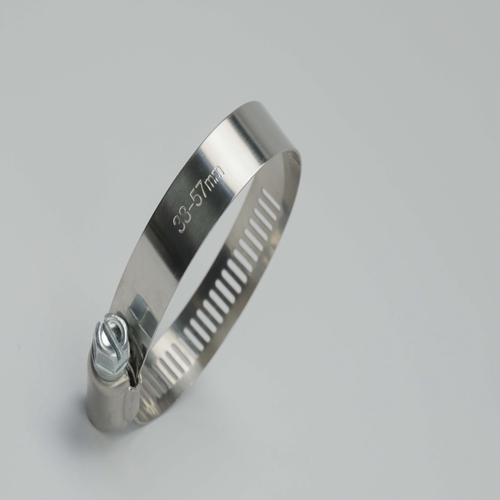
3. Screw and Nut Production
The worm screw, typically made from hardened carbon steel (often zinc-plated for corrosion resistance) or stainless steel, is precision-formed through cold heading and thread rolling. This ensures a strong, durable thread profile that can withstand high torque loads without stripping. The nut, if separate, is also formed through similar high-precision processes. For American-style clamps, the screw directly engages with the band perforations, eliminating the need for a separate nut.
4. Assembly
This stage involves the precise assembly of the individual components. The worm screw is inserted into the housing, and the band is fed through the housing. Automated assembly lines, often employing robotic arms, ensure high throughput and consistent quality. This process is meticulously calibrated to ensure smooth operation of the clamping mechanism.
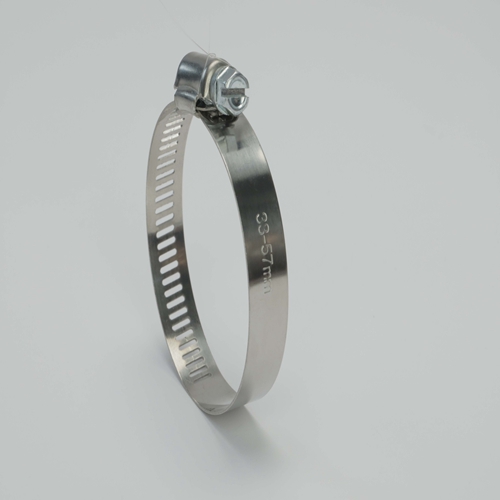
5. Quality Control and Testing
Rigorous quality control (QC) is paramount at every stage, but especially post-assembly. Testing protocols adhere to international standards such as ISO (e.g., ISO 9001 for quality management systems) and specific clamp standards like SAE J1508 or DIN 3017. Key tests include:
- Torque Testing: Verifies the maximum installation torque the hose clamp can withstand without failure.
- Breakaway Torque: Measures the torque required to release the clamp.
- Proof Load Testing: Assesses the clamp's ability to maintain clamping force under pressure.
- Corrosion Resistance Testing: Salt spray tests (e.g., ASTM B117) are conducted to evaluate the stainless steel's resistance to corrosion over time.
- Dimensional Accuracy: Precision measurement using calipers and gauges ensures all specifications are met.
- Visual Inspection: Checks for defects, burrs, or inconsistencies.
These stringent checks ensure that each hose clamp performs reliably under its specified operating conditions, contributing to a longer service life and preventing premature failures. The expected service life of a high-quality stainless steel hose clamp can exceed 10-15 years in typical applications, provided it is correctly installed and not subjected to extreme, unpredicted stresses.
6. Packaging and Dispatch
Finished hose clamps are packaged according to customer specifications, often in bulk or specific kit quantities. Proper packaging protects the clamps during transit and storage, ensuring they arrive in pristine condition, ready for installation. Compliance with packaging standards and environmental regulations is also maintained.
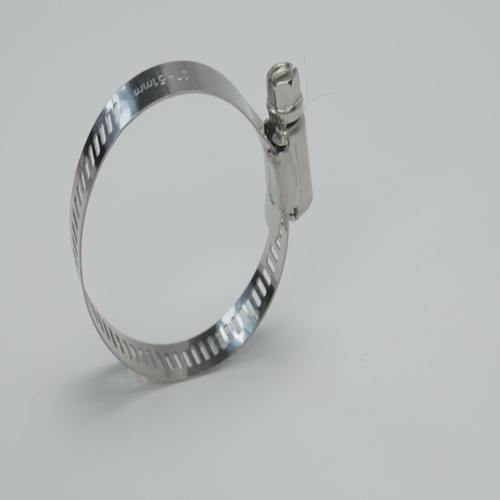
Technical Specifications and Performance Metrics
Understanding the technical specifications of hose clamps is crucial for engineers and procurement specialists to ensure compatibility and optimal performance. The Large Stainless Steel Adjustable American Type Hose Clamp is designed with specific parameters to meet the demands of heavy-duty applications.
Key Parameters for Hose Clamps
| Parameter | Description | Typical Value Range (American Type) |
|---|---|---|
| Material Grade | Standard material for band, housing, and screw to resist corrosion and ensure strength. | AISI 304 Stainless Steel (Standard), AISI 316 Stainless Steel (High Corrosion Resistance), Carbon Steel with Zinc Plating (Screw) |
| Band Width | The width of the stainless steel band, influencing clamping force distribution. | Typically 12.7 mm (1/2 inch) to 14.2 mm (9/16 inch) for American style. Large clamps can go up to 19mm or more. |
| Band Thickness | The gauge of the stainless steel band, affecting rigidity and clamping power. | 0.6 mm to 0.8 mm (0.024 - 0.031 inches) |
| Clamping Diameter Range | The minimum and maximum outer diameter of the hose the clamp can securely fasten. | From 6 mm (0.25 in) up to 300 mm (12 in) or more for large sizes. Specific ranges vary per clamp size. |
| Installation Torque | The recommended torque to apply for secure fastening without damaging the clamp or hose. | 4.5 Nm to 8.0 Nm (40 - 70 in-lbs) for standard sizes, higher for larger clamps. |
| Burst Pressure Rating | The maximum internal pressure a hose assembly can withstand before failure, directly impacted by clamp performance. | Varies widely with hose type, but well-clamped systems can exceed 150 PSI (10 bar). |
| Temperature Range | The operational temperature limits for the clamp material. | -40°C to +120°C (-40°F to +250°F) for typical stainless steel. |
Performance Advantages of American Style Hose Clamps
- Robust Construction: The design of the american style hose clip, characterized by its wide band and robust housing, provides superior strength and durability compared to many other clamp types.
- High Clamping Force: The worm gear mechanism allows for a high degree of tightening, generating significant and uniform clamping pressure around the hose, effectively preventing leaks even under high internal pressures or vibrations.
- Adjustability: Its inherent adjustability across a wide diameter range makes it incredibly versatile, reducing the need for multiple fixed-size clamps and simplifying inventory management. This makes them ideal adjustable pipe tube clamps.
- Corrosion Resistance: When manufactured from high-grade stainless steel (SS304 or SS316), these clamps offer excellent resistance to rust, chemicals, and environmental degradation, prolonging service life in challenging conditions.
- Ease of Installation: Simple design allows for quick and straightforward installation with a standard screwdriver or nut driver, facilitating efficient assembly and maintenance.
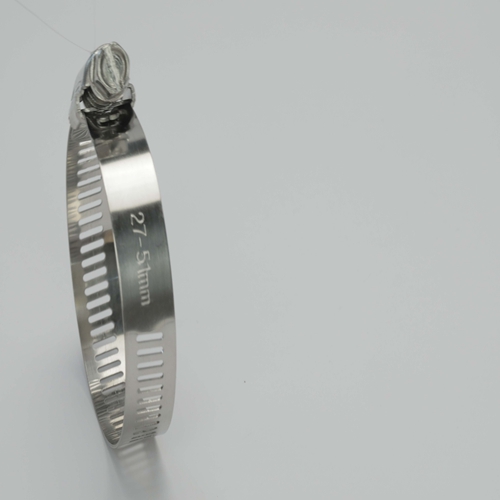
Diverse Application Scenarios and Industry Benefits
The versatility of the Large Stainless Steel Adjustable American Type Hose Clamp makes it a preferred fastening solution across a multitude of industrial sectors. Its design excels in scenarios demanding robust, long-lasting, and leak-proof connections.
Key Industries and Applications:
- Automotive Industry: Essential for radiator hoses, fuel lines, air intake systems, and exhaust systems. The anti-corrosive properties of stainless steel are critical for resisting exposure to road salts, engine fluids, and high temperatures, ensuring the reliability of the entire engine cooling and fuel delivery system. As an american type radiator hose clamp, it's widely used in heavy-duty trucks and agricultural machinery where vibration and extreme conditions are common.
- Petrochemical and Chemical Processing: Used for securing pipes and hoses carrying various chemicals, oils, and gases. The resistance of SS316 to aggressive corrosive agents is vital here, preventing hazardous leaks that could lead to environmental damage or safety incidents. Ensures secure connections for fluid transfer in refineries, chemical plants, and offshore platforms.
- Marine and Shipbuilding: In saltwater environments, extreme corrosion resistance is paramount. Stainless steel hose clamps are used extensively in bilge pumps, cooling systems, exhaust hoses, and plumbing, where their durability ensures long-term operational integrity despite constant exposure to moisture and saline conditions.
- Agriculture: Crucial for irrigation systems, farm machinery hydraulics, and pneumatic lines. These clamps must withstand outdoor elements, dirt, and chemical exposure, ensuring efficient and reliable operation of agricultural equipment.
- Plumbing and HVAC: For securing connections in residential and commercial heating, ventilation, and air conditioning systems, as well as general plumbing. They provide a reliable seal for water lines, drainage systems, and air ducts.
- Heavy Machinery and Construction: Used in hydraulic systems, engine cooling, and fuel lines of excavators, bulldozers, and other heavy equipment. Their robustness is essential for handling high pressures and vibrations typical of these demanding applications.
- Food and Beverage Industry: While requiring specific sanitary standards (often tri-clamp fittings), general-purpose hose clamps are still used in non-product contact areas for utilities, water lines, and clean-in-place (CIP) systems. Stainless steel is preferred for hygiene.
- Water Supply and Drainage: Essential for municipal water treatment plants, pumping stations, and sewage systems. They ensure reliable, leak-free connections in large diameter pipes and hoses, contributing to efficient water management and preventing losses.
Key Advantages in Typical Application Scenarios:
- Energy Saving: By ensuring leak-proof connections, these clamps prevent energy losses associated with fluid or air leaks in pneumatic and hydraulic systems. A properly sealed system operates at optimal pressure and flow, reducing pump or compressor workload and subsequently, energy consumption.
- Corrosion Prevention: The use of high-grade stainless steel (SS304, SS316) is inherently advantageous, preventing rust and degradation even in highly corrosive environments. This extends the lifespan of not only the clamp but also the hose and connected equipment, reducing maintenance frequency and replacement costs.
- Enhanced Safety: Secure hose clamps minimize the risk of hose detachment under pressure, preventing spills of hazardous fluids, steam burns, or other injuries. Their reliability is a direct contributor to operational safety in any industrial setting.
- Reduced Downtime: The longevity and reliability of quality adjustable pipe tube clamps translate directly into less frequent maintenance and fewer unplanned shutdowns. This significantly improves overall operational efficiency and productivity.
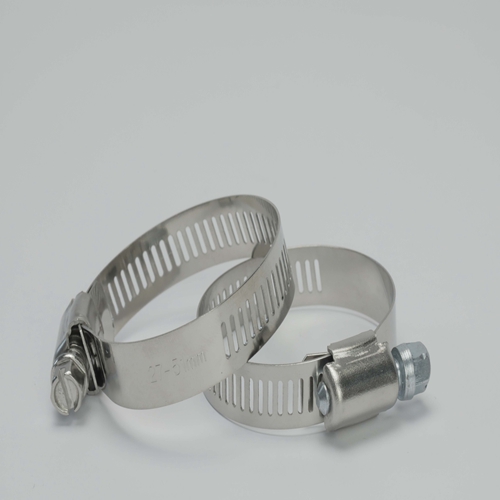
Choosing the Right Manufacturer: Expertise, Authority, and Trustworthiness
When sourcing industrial components like hose clamps, the choice of manufacturer is as critical as the product itself. A reliable supplier embodies Expertise, Experience, Authoritativeness, and Trustworthiness (), which are paramount for B2B partnerships.
Expertise in Design and Engineering
A leading manufacturer demonstrates deep technical expertise in hose clamp design, material science, and application engineering. This includes understanding the nuances of different stainless steel grades (e.g., the difference between 304 and 316 for specific chemical resistances), optimal band perforations for maximum engagement, and screw thread designs for superior torque handling. They can provide detailed engineering drawings, performance curves, and material certifications (e.g., mill certificates for stainless steel billets).
Experience Through Real-World Applications and Client Feedback
Experience is built on years of serving diverse industries and learning from real-world application challenges. A reputable manufacturer will have a portfolio of successful projects and be able to share case studies where their hose clamps solved specific problems, such as preventing leaks in high-vibration environments or enduring extreme temperatures. Customer feedback mechanisms, including testimonials and post-purchase surveys, are integral to continuous improvement. For instance, feedback from a major automotive OEM might lead to improvements in anti-vibration features or coating technologies for the worm screw.
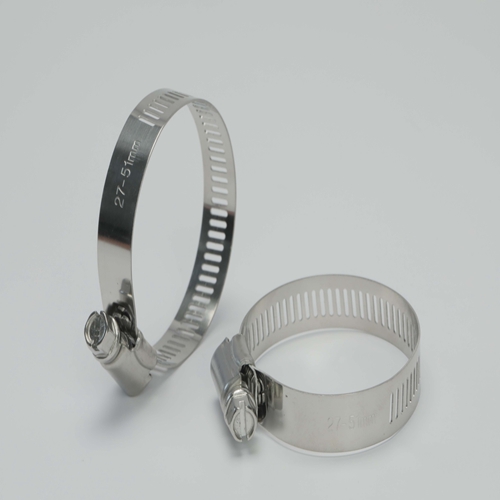
Example Case Study: A client in the offshore oil and gas industry experienced frequent failures with standard clamps on critical hydraulic lines due to continuous exposure to saltwater spray and high vibrations. Upon consultation, our engineering team recommended the Large Stainless Steel Adjustable American Type Hose Clamp in AISI 316 grade, specifically designed with enhanced housing and screw metallurgy for superior fatigue resistance. After 24 months in service, these clamps demonstrated zero failures, significantly reducing maintenance costs and increasing operational uptime for the client.
Authoritativeness Through Certifications and Partnerships
Authoritativeness is established through adherence to international standards and strategic industry partnerships. Look for manufacturers with:
- ISO 9001 Certification: Demonstrates a commitment to quality management systems.
- Compliance with Industry Standards: Such as SAE J1508 for hose clamps, ASTM for material testing, or DIN for European specifications.
- Specific Product Certifications: e.g., for use in food-grade applications (if applicable) or marine environments.
- Long-standing Service History: Companies with decades of operation in the field have accumulated invaluable knowledge and a proven track record.
- Collaborations: Partnerships with academic institutions for R&D or with major industry players signify leadership and innovation.
Authoritative manufacturers also provide comprehensive testing data, including stress tests, lifecycle tests, and corrosion resistance reports, often verified by independent third-party laboratories.
Trustworthiness: Transparency and Customer Support
Trustworthiness is built on transparency, reliability, and robust customer support. This includes:
- Clear Delivery Timelines: A reliable partner provides accurate and consistent delivery schedules. For custom orders, a typical lead time might be 4-6 weeks after design approval, with standard products often available for immediate shipment.
- Comprehensive Warranty Policies: A strong warranty, usually 1-3 years against manufacturing defects, signals confidence in product quality.
- Responsive Customer Service: Availability of technical support, troubleshooting assistance, and easy communication channels are vital for long-term partnerships.
- Transparent Pricing and Order Processing: Clear quotations, payment terms, and order tracking systems.
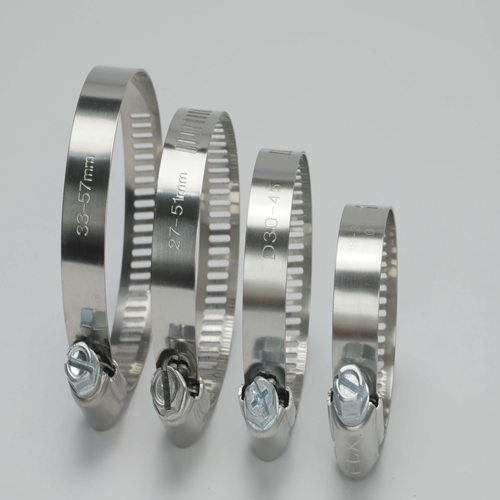
Custom Solutions and Manufacturer Comparison
While standard hose clamps serve a wide range of applications, some industrial requirements demand tailored solutions. A proficient manufacturer will offer customization capabilities to meet unique specifications, alongside standard products. Understanding the differences between manufacturers is also key.
Customization Capabilities: Tailored Hose Clamps for Specific Needs
Customization goes beyond just size. It can involve:
- Special Materials: For extreme temperatures, chemical resistance, or non-magnetic properties (e.g., exotic alloys beyond 304/316 stainless steel).
- Unique Band Designs: Different perforation patterns, increased band width for larger surface contact, or specialized coatings for specific hose materials.
- Modified Screw or Housing: For specific torque requirements, anti-tamper features, or integration with automated assembly systems.
- Coating and Surface Treatments: For enhanced corrosion resistance (e.g., zinc-nickel plating for carbon steel screws), improved grip, or aesthetic purposes.
- Integrated Solutions: Development of clamp-and-hose assembly kits, pre-installed clamps, or custom packaging.
Working with a manufacturer that offers robust R&D and engineering support for custom solutions ensures that even the most niche application receives a perfectly optimized hose clamp.
Manufacturer Comparison: Standard vs. Premium Providers
The market for hose clamps is diverse, ranging from mass-produced standard components to high-performance, precision-engineered solutions. It's crucial to understand what differentiates manufacturers.
| Feature | Standard Manufacturer (Cost-Focused) | Premium Manufacturer (Performance & Quality Focused) |
|---|---|---|
| Material Quality | Often unspecified or lower-grade stainless steel (e.g., 200 series) or commercial carbon steel. Less consistent. | Certified AISI 304, AISI 316, or specialized alloys with material traceability. Superior corrosion resistance. |
| Manufacturing Process | Basic stamping, less precise tooling, minimal deburring. Higher potential for burrs or sharp edges. | Precision stamping, advanced automated assembly, consistent deburring, controlled heat treatment for specific parts. |
| Quality Control | Spot checks, basic visual inspection. Minimal or no performance testing. | Comprehensive multi-stage QC, adherence to ISO/SAE standards, in-house torque, burst, salt spray testing. Batch traceability. |
| Performance Metrics | May meet minimum standards, but often inconsistent clamping force, lower torque resistance. Shorter lifespan. | Exceeds industry standards, consistent high clamping force, superior vibration resistance, extended service life. |
| Customization | Limited to no customization options. | Extensive customization capabilities, engineering support for bespoke designs. |
| Certifications | Few to none; reliance on basic self-declaration. | ISO 9001, relevant industry standard compliance (e.g., SAE, DIN), material certifications. |
| Technical Support & Warranty | Minimal post-sale support, limited or no warranty. | Dedicated technical support, comprehensive product warranty, engineering consultations. |
While standard hose clamps might offer initial cost savings, the long-term total cost of ownership often favors premium providers due to reduced failure rates, enhanced safety, and minimal downtime. For critical applications, investing in a high-quality large adjustable hose clamp from a reputable manufacturer is an economic imperative.
Frequently Asked Questions (FAQs) about Hose Clamps
To further assist B2B professionals, here are answers to common questions regarding hose clamps, particularly the Large Stainless Steel Adjustable American Type Hose Clamp.
Q1: What is the primary difference between American Type and European (DIN) Type hose clamps?
A1: The main difference lies in their design and construction. American Type hose clamps (like the worm gear clamp) typically feature a band with perforated slots that the worm screw directly engages with. The screw is usually fixed within a housing. European (DIN) Type clamps (often known as W1, W2, etc., based on material) commonly use a band with an embossed thread, and the screw engages a separate nut or directly with this embossed thread. American types generally offer a wider range of adjustability and often higher clamping force for a given size, making them excellent adjustable pipe tube clamps, while European types are often preferred for their smoother internal band surface, which can be gentler on soft hoses.
Q2: How do I select the correct size of hose clamp for my application?
A2: To select the correct size, you need to measure the Outer Diameter (OD) of the hose after it has been placed over the fitting or barb. The selected hose clamp's clamping range must encompass this measured OD. For example, if your hose's OD over the fitting is 50mm, you would choose a clamp with a range of, say, 40-60mm. Always ensure the clamp's minimum diameter is smaller than the hose OD and its maximum diameter is larger, allowing for proper tightening and adjustment.
Q3: What are the benefits of using Stainless Steel 316 for hose clamps compared to SS304?
A3: While both SS304 and SS316 are excellent choices for hose clamps, SS316 offers superior corrosion resistance, particularly against chlorides (like saltwater and many industrial chemicals). This is due to the addition of molybdenum in its alloy composition. SS304 is suitable for general-purpose applications and environments not exposed to high concentrations of chlorides. For marine, chemical processing, or outdoor applications near coastlines, SS316 is the preferred and safer choice for a large adjustable hose clamp, significantly extending its service life and reliability.
Q4: What is the recommended installation torque for a hose clamp, and why is it important?
A4: The recommended installation torque is the specific tightening force (measured in Newton-meters or inch-pounds) that should be applied to the hose clamp screw. This value is critical because it ensures adequate clamping force without over-tightening, which can damage the hose or the clamp itself, leading to premature failure. Under-tightening results in insufficient sealing and potential leaks. Most manufacturers provide a recommended torque specification, often ranging from 4.5 Nm to 8.0 Nm for standard American Type clamps. Using a torque wrench is highly recommended for critical applications to ensure consistent and correct installation.
Q5: What is your standard delivery period for large orders of hose clamps, and what are your warranty terms?
A5: For standard hose clamp products, our typical delivery period for large orders is 2-4 weeks, depending on quantity and current inventory. For custom-engineered solutions, the lead time is usually 6-8 weeks, allowing for design, prototyping, and rigorous testing. We stand behind the quality of our Large Stainless Steel Adjustable American Type Hose Clamp with a comprehensive warranty of 2 years against manufacturing defects. This warranty underscores our commitment to excellence and provides our clients with peace of mind regarding their investment.
Conclusion: The Unseen Pillar of Industrial Reliability
The hose clamp, particularly the robust Large Stainless Steel Adjustable American Type Hose Clamp, may often be overlooked, but its contribution to the reliability and safety of industrial fluid transfer systems is immense. From the meticulous selection of high-grade stainless steel to advanced manufacturing processes and stringent quality control, every aspect of its production is geared towards delivering uncompromising performance.
For B2B decision-makers, understanding the technical specifications, diverse applications, and the importance of partnering with a manufacturer that embodies principles is paramount. Investing in high-quality adjustable pipe tube clamps not only ensures immediate operational efficiency but also contributes to long-term cost savings by reducing maintenance, preventing failures, and enhancing overall system integrity. In an era where industrial processes are becoming increasingly complex and demanding, the reliability of every component, no matter how small, becomes a critical factor for success.
Authoritative References
- American Society of Mechanical Engineers (ASME). "BPVC Section VIII: Rules for Construction of Pressure Vessels."
- Society of Automotive Engineers (SAE). "SAE J1508: Standard for Hose Clamps."
- International Organization for Standardization (ISO). "ISO 9001: Quality management systems – Requirements."
- ASTM International. "ASTM B117: Standard Practice for Operating Salt Spray (Fog) Apparatus."
- The Materials Information Society (ASM International). "ASM Handbook, Volume 1: Properties and Selection: Irons, Steels, and High-Performance Alloys."
- Deutsche Institut für Normung (DIN). "DIN 3017: Clamps for Rubber and Plastic Hoses."
- Fluid Power Association (FPA). "Hydraulic System Design and Maintenance Best Practices."
- National Association of Corrosion Engineers (NACE International). "Corrosion Engineering: Principles and Practice."
This is the last article
-
Durable Adjustable Hose Clamps for Pipes & Radiators
NewsAug.21,2025
-
Heavy Duty Hose Clamps: Premium Stainless Steel & Adjustable
NewsAug.19,2025
-
Large Stainless Steel Adjustable American Type Hose Clamp - Hebei Pux Alloy Technology Co., Ltd
NewsAug.18,2025
-
Large Stainless Steel Adjustable Hose Clamp - Hebei Pux Alloy|Durable Corrosion Resistance&Adjustable Design
NewsAug.18,2025
-
Large Stainless Steel Adjustable Hose Clamp - Hebei Pux Alloy Technology Co., Ltd
NewsAug.18,2025
-
American Style Adjustable Hose Clamps for Pipe & Radiator
NewsAug.18,2025

